This CEO Wants to Turn Prison Risk Into a Universal Financial Metric
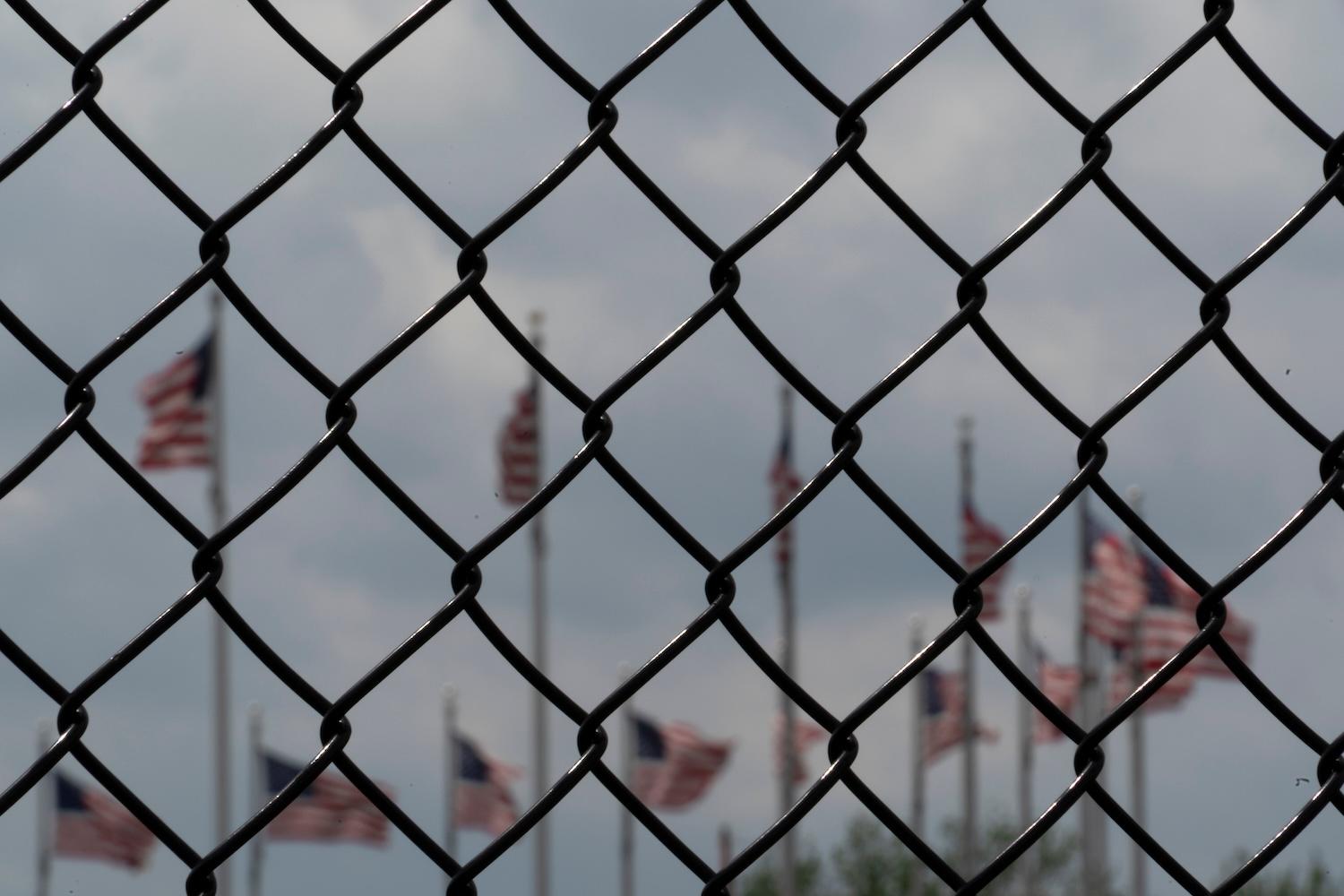
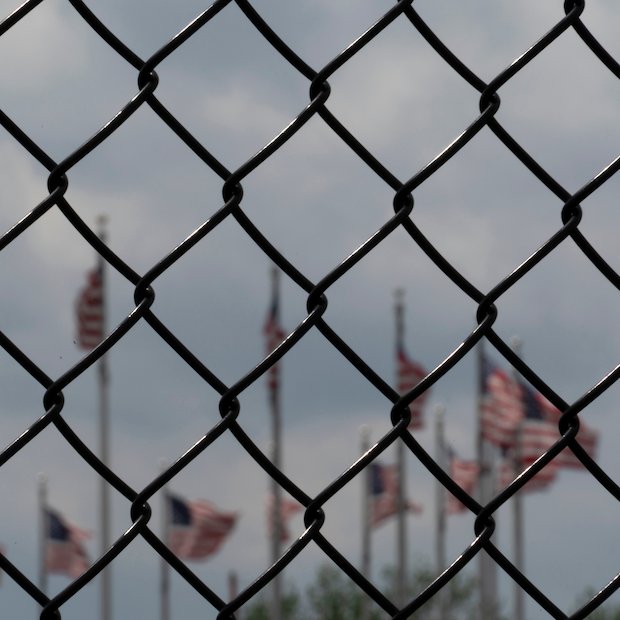
(Image: Andrea Izzotti/Adobe Stock)
"Climate risk is investment risk," BlackRock CEO Larry Fink wrote in his 2020 letter to executives. The definitive statement from the head of the world's largest asset manager widely signaled the mainstream adoption of climate risk as a metric in investment decision-making. Tanay Tatum-Edwards, CEO and founder of the data provider FreeCap Financial, wants to do the same with prison risk.
The movement to mainstream prison risk as a financial metric moved one step further with a newly launched "decarceration index" that's proven to deliver above-market financial returns.
What is prison risk anyway, and why should investors care?
In a March edition of Brands Taking Stands, we took a deep dive into FreeCap Financial's 2023 Criminal Justice Report, which ranks the largest U.S. companies based on their vending contracts with prisons, use of prison labor and fair chance hiring policies for people with criminal justice histories.
Though most don't realize it, profiting from the U.S. prison system goes far beyond private prison operators. Companies across every industry in the Russell 3,000 Index made more than $8.6 billion from state and federal prison contracts between 2019 and 2022, according to FreeCap Financial. Less than a fifth of the S&P 100 Index, which includes the largest U.S. companies, ban the use of prison labor.
Being publicly linked to prison labor and prison profiteering has proven to be toxic to companies' reputations, with some being linked to prison labor in the media decades after banning it.
Further, as the United States faces labor shortages across industries, refusing to hire the estimated 1 in 3 American adults with justice involvement that would appear on a background check could easily leave companies short-staffed and falling behind in the race for talent.
All of this adds up to material financial risk for companies and their investors. "There's these trends showing that companies who engage in fair chance hiring are going to remain competitive, and folks who are profiting off of prison are engaging in reputational risk," Tatum-Edwards said. "If you are looking at those trends, companies whose business models are fixed around and rely upon profiting off of prisons are going to have trouble as incarceration decreases."
FreeCap Financial's Prison Vending Relationship Dataset and S&P 500 rankings for prison labor and fair chance hiring give asset managers the tools to reduce their exposure to prison risk and drive more values-based investment.
The newly launched FreeCap Financial BITA Decarceration Index, developed with the investment index technology firm BITA, translates this research into an investable product — and the results are promising.
The Decarceration Index helps investors reduce prison risk while delivering strong returns
Tatum-Edwards sees the movement to mainstream prison risk and fair chance hiring as financial metrics being similar to the early days of gender-lens investing when researchers began building indexes that screened out companies with all-male boards of directors.
"All these companies went from all males to having three women on the board of directors so they weren't negatively screened," she explained. "It was very quick to happen because it became something that was explicitly excluding capital. Now every big bank has their version of a gender index."
The new decarceration index, also called the FREE Index, includes companies in the S&P 500 that deliver top performance on both prison risk mitigation and fair chance hiring.
"Measuring prison labor and vending contracts can't be successful in isolation without fair chance hiring," Tatum-Edwards said. "But we didn't want companies who engage in hiring but profit from prisons to make the list. You have to be actively involved in decarceration at both ends."
The Index includes 50 of the largest U.S. companies, including Apple, Google parent company Alphabet, chip maker Nvidia and financial giant JPMorgan Chase.
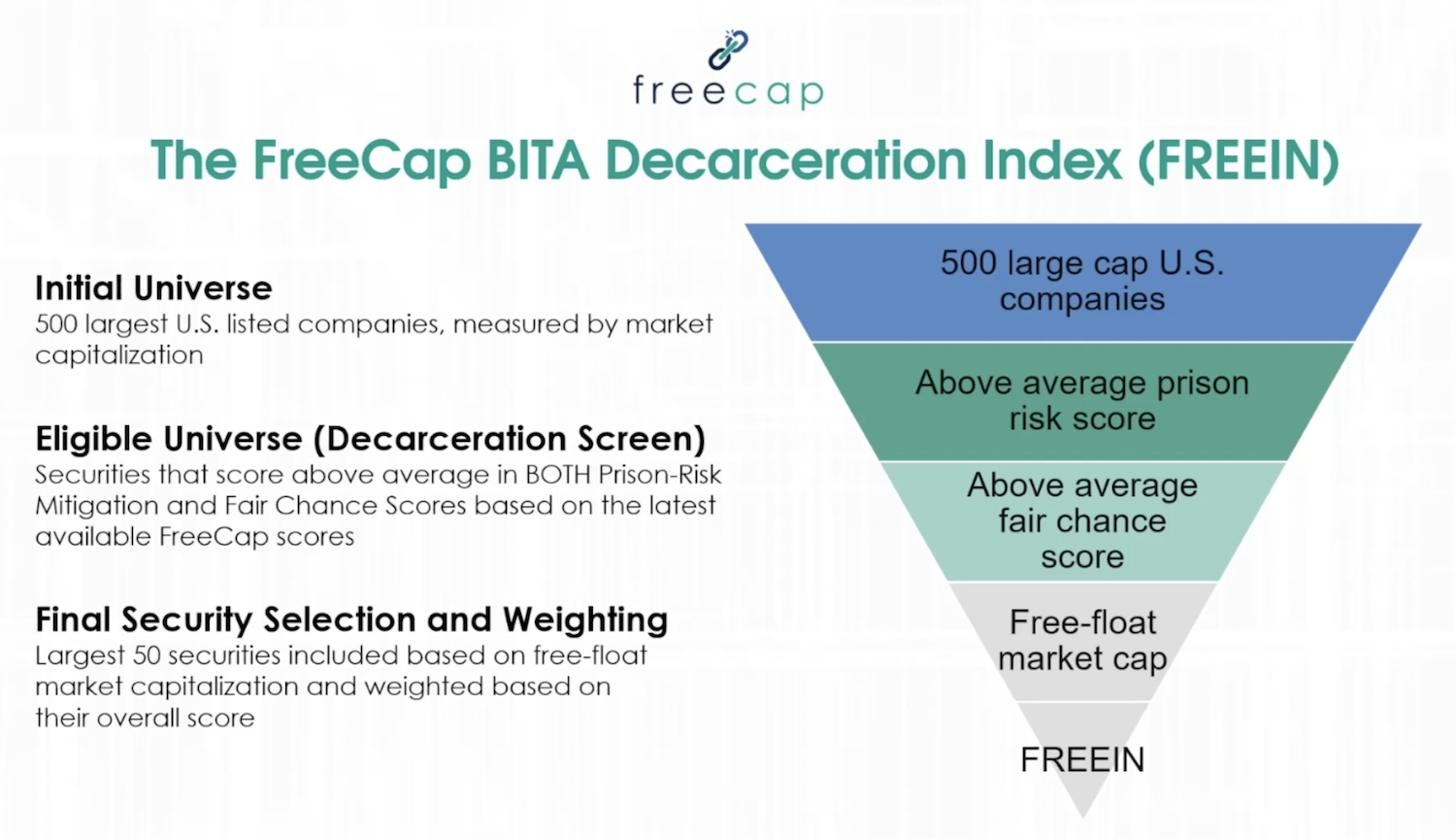
"From an economic perspective, we believe that companies who are using fair chance hiring as a way to address labor shortages in their supply chain are going to have the biggest financial benefit from it," Tatum-Edwards said. "What excites me about the research is that our initial backtesting shows it is profitable. Isolating that variable out is actually profitable. I didn't know that was going to be the case going into it. But now that we do, it makes it a real opportunity to be ambitious with our product development … because it’s good for business."
Based on backtesting, which tracks the portfolio companies' historical performance, the Index has potential to deliver above-market returns. "We only have three years of backtesting, but for the last two years, our investment thesis beats the iShares S&P 500 index," Tatum-Edwards said.
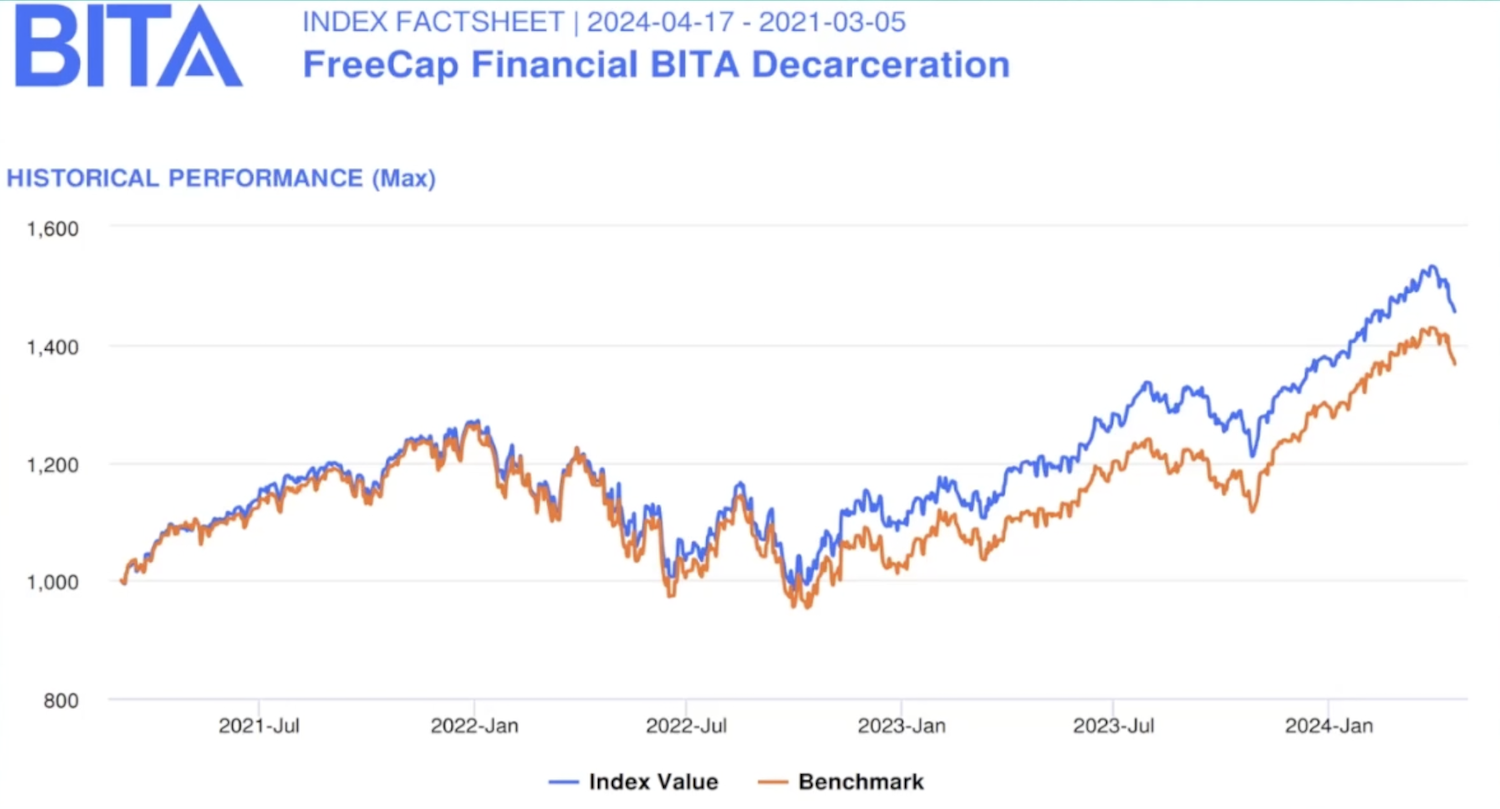
Asset mangers can license the Index to create their own financial products or use it as a screen in their portfolios. "This index is basically a ready-made list of equities that a fund manager can replicate to create their own product," Tatum-Edwards said. "It succinctly communicates the value proposition and why it's important."
By turning ranks and scorecards into an investable product, FreeCap is able to demonstrate that screening out companies exposed to prison risk, while screening in companies leading the pack on fair chance hiring, can actually be profitable.
In doing so, the Index provides a key signal to investors that these factors influence their returns. "Then what you're able to do is make prison risk a material financial metric, which gets incorporated into the way everything is measured," Tatum-Edwards explained. "Even if you're not completely screening, it impacts how a company is valued and how capital is allocated."
While the Index is limited to asset managers and researchers at present, FreeCap Financial is working to turn it into a retail investment fund — which would make it available to everyday investors and allow companies to include it as an option in their 401(k) plans.
It's likely to receive a warm reception, as 80 percent of retail investors think it's important to consider how their portfolios impact economic inequality, according to recent research from GlobeScan and InfluenceMap.
"Customers drive demand for products," Tatum-Edwards said. "That is one of the main reasons why our team is so committed to creating a retail product, because [nearly 1 in 2 Americans] have a family member who's impacted by incarceration. It's a uniquely American problem, and I think we all want to figure out how to leverage the resources we have at our disposal to impact it."
The retail version of the FREE Index is expected in early 2025, and TriplePundit will have all of the details. Subscribe to our weekly Brands Taking Stands newsletter to stay up-to-date.
Despite Attacks, The Demographic Case for Pride Month Continues to Grow


(Image: Kajetan Sumila/Unsplash)
Some leading brands are scaling back their Pride Month activities this year in the wake of last year’s attacks on the LGBTQ+ community. Nevertheless, new demographic data provides more evidence that corporate diversity and inclusion outreach is a sound business practice to highlight and celebrate, not hide away as if the U.S. workforce is a demographic monolith.
The limited success of the 2023 LGBTQ+ boycotts
The months leading up to Pride Month last year were marked by a furious spate of anti-LGBTQ+ rhetoric and social media boycotts by right-wing media and right-wing activists. Directed at the leading retailer Target and the Bud Light brand of the beverage maker Anheuser-Busch, the outpouring of hate included several instances of physical harassment at Target stores.
In the wake of those attacks, Ad Age and other news organizations report that brands are taking a quieter, more cautious approach to LGBTQ+ outreach this year.
However, neither Target nor Bud Light completely dropped their commitments to Pride Month. On May 9, Target indicated that fewer stores will carry Pride-themed merchandise this year, but the company will continue participating in Pride Month activities.
On its part, Anheuser Busch,a branch of the global firm AB InBev, adopted a traditional sports-oriented advertising campaign this year. Still, Bud Light is the featured presenter of the high-profile 2024 Pride Fest in Chicago.
A strong majority of overall businesses also express a continuing commitment to Pride Month. PR Daily and other media cite a recent survey by the firm Gravity Research, showing that only 9 percent of companies surveyed were “definitely planning changes” in response to last year’s backlash. Another 30 percent were “unsure” as of the survey date, and 78 percent were “not planning changes.”
The demographic case for Pride Month
Among other factors, the commitment to Pride Month reflects the premium leading corporations place on workforce diversity in the context of fact-based demographic trends.
The polling firm Gallup, for example, has surveyed LGBTQ+ identification since 2012. On March 12, Gallup released the results of a 2023 telephone survey that found 7.6 percent of U.S. adults age 18 and older place themselves in non-heterosexual categories.
“The current figure is up from 5.6 percent four years ago and 3.5 percent in 2012,” according to Gallup.
That aggregated figure of 7.6 percent masks a much more significant trend for employers seeking to recruit the next young generation of top talent.
“Overall, each younger generation is about twice as likely as the generation that preceded it to identify as LGBTQ+,” Gallup reported. More than 20 percent of Gen Z adults, up to age 26, identified as LGBTQ+ in the 2023 survey.
The impact of employee resource groups
The Gallup poll also complements the findings of another Gravity Research survey, which explores the growing influence of employee resource groups (ERGs).
On March 27, Gravity Research presented several key survey-based insights into new developments in the ERG area, as related to corporate DEI (diversity, equity and inclusion) efforts.
“ERGs are also taking on a more strategic role in shaping how corporations engage with societal issues,” observed Kendall Seketa, a Gravity Research writer.
In addition to providing a “pulse-check on internal messaging,” Seketa advises that ERGs can provide important input on external communications. Business leaders should reach out to ERGs and get feedback “before rolling out new initiatives to a wider, global audience,” Seketa writes.
Pride Month and the insurrection connection
Holding a strong line on Pride Month is not only a matter of supporting equal human and civil rights for minority groups. LGBTQ+ rights have become the front line in an increasingly fraught battle for American democracy as we know it today.
That may seem over the top, but signs of a second insurrection are growing. The forces at work in the January 6, 2021, attack on Congress have regathered in the halls of state legislatures, and they have been busy.
Earlier this year, for example, the influential right-wing organization the Heritage Foundation produced a 925-page book titled “Mandate for Leadership,” which details how the Trump administration would implement the organization’s “Project 2025” plan for establishing permanent authoritarian rule in the U.S.
“Now Trump and his allies have another opportunity to establish a 'unified Reich,' as mapped out by a Heritage Foundation book," TriplePundit reported last week, noting the potential impact on ESG investing.
Leveraging hate to recruit anti-democratic activists
Project 2025 is not just a paper-and-pen exercise, as the insurrectionists leverage anti-LGBTQ+ sentiment to swell their numbers for the next attempt.
The months following January 6, 2021, saw a sudden surge in anti-LGBTQ+ bills introduced in state legislatures, a trend that continued into 2022. With the support of elected officials behind them, it was no surprise to find anti-LGBTQ+ activists emboldened to violence during the run-up to Pride Month 2022.
“Pride Month has now become a proving ground and recruiting tool” for the next insurrection, TriplePundit reported in June of 2022.
Separately, the FBI and the Department of Homeland Security have also drawn attention to anti-LGBTQ+ rhetoric attributed to the ISIS terrorist organization, among others.
“Foreign terrorist organizations or supporters may seek to exploit increased gatherings associated with the upcoming June 2024 Pride Month,” the agencies warned in a joint announcement on May 10.
The U.S. Department of State also issued a worldwide travel advisory that business leaders should take to heart in the U.S., as well.
“The Department of State is aware of the increased potential for foreign terrorist organization-inspired violence against LGBTQI+ persons and events and advises U.S. citizens overseas to exercise increased caution,” the department warned.
Communication is the key
In this atmosphere of heightened risk, it is all the more essential for employers to keep the lines of communication open throughout their workforce.
“Creating a culture of open dialogue while also managing employee expectations for engagement will be critical in 2024 amidst a potentially divisive election and a desire amongst corporations to remain apolitical while also supporting their workforce and enforcing their corporate values,” Seketa, of Gravity Research, writes.
That reminder about the value of open dialog is helpful, but the “remain apolitical” guidance has become increasingly irrelevant. Beyond the impact of anti-LGBTQ+ extremists on their employees, customers, and clients, business leaders who ignore the political implications of LGBTQ+ hatred will do so at their own peril.
Neurodivergent Workers and Businesses Thrive Together with the Right Support
(Image courtesy of Auticon.)
An oft-cited statistic claims that only 15 percent of autistic adults in the U.S. are employed full time. But there are caveats that could very well be affecting the data, such as high levels of missed and misdiagnoses among people assigned female at birth and people of color. And the 85 percent unemployment rate only applies to those who are college educated. In fact, a 2017 study showed much higher rates of employment — nearly half of autistic adults reported working.
Unemployment isn’t the only issue either. Autistic workers also face underemployment, with many who are college-educated working minimum-wage jobs, often part time. Likewise, workers with ADHD face high rates of unemployment and termination, as well as lower annual earnings. Unemployment and underemployment are elevated across the neurodivergent spectrum.
Yet neurodivergent workers often outperform their neurotypical peers when they’re properly matched to jobs that make the most of their talents and are empowered through the right accommodations and management style. A neurodivergent recruitment program run by JPMorgan Chase reported perfect accuracy among new hires in specific tech roles and up to 140 percent higher productivity than more experienced workers.
How Auticon is making a difference
TriplePundit spoke with Vance Checketts, the CEO of the consulting company Auticon, about how to create an environment where neurodivergent workers can realize their potential and feel fulfilled in their employment. Auticon is the largest autistic-majority employer worldwide, exclusively employing autistic adults as tech consultants for businesses like Nationwide and Health Catalyst. It also offers consulting services to companies that want to expand their neurodivergent workforce.
“Eighty percent of these people were on the sidelines, working in jobs that were far below their abilities, or not working at all because they didn't have the support they needed,” Checketts said of neurodivergent employees who found their niche with employers that actively pursue inclusivity and accommodation. “Not only are you having social impact providing jobs for people, but you're providing jobs to people that didn't have the same type of job before. And they are so committed, and so excited, and so loyal, assuming that they have the support that they need. So we get tremendous satisfaction and employee satisfaction.”
For Auticon’s neurodiverse team specifically, 84 percent reported loving their jobs and 78 percent credit their employment with enhancing their overall well-being, he said. That’s a huge win for a population that was sidelined for far too long. The numbers beat U.S. averages, in which only 51 percent of workers say they are highly satisfied in their jobs.
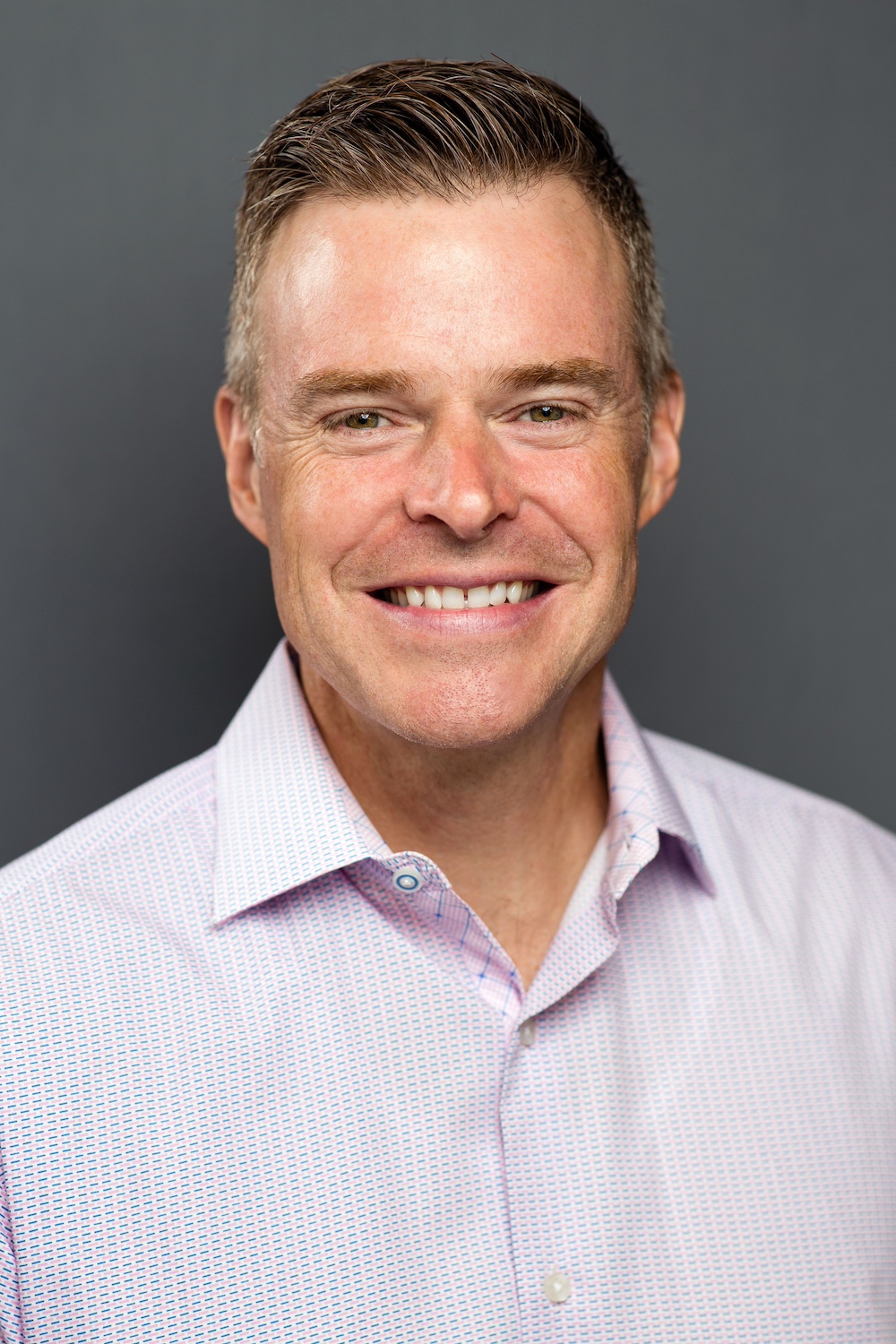
Creating a neuroinclusive workplace
“One of the biggest challenges happens when people just think about recruiting, and they don't think about what happens after recruiting,” Checketts said. “It’s putting the cart before the horse to say, ‘We're going to come up with a neuroinclusive recruiting process,’ if you don’t have a neuroinclusive environment for those people to go into. You will lose them at a high, high rate.”
He encourages companies to focus on making the workplace neuroinclusive first. The most impactful and efficient way to do so is through job coaches, he said. Coaches work with the employee and their manager to ensure that the proper supports are in place for that particular worker’s needs.
“The supervisor or manager can be a really important resource for the autistic individual,” he said, adding that rigor and flexibility are integral to managing a neurodiverse workforce. “Rigor in terms of just being clear ... but flexible enough to know that if you need to switch off your camera, that's okay … [If] you need to request to reschedule that's okay.”
Common accommodations for autistic and neurodiverse employees generally include schedule versatility, the flexibility to not be expected in the office every day, communicating changes in advance, providing communications in a variety of mediums, and allowing for sensory accommodations in office and in online meetings — such as having the camera off, Checketts said. Autistic team members are highly committed and perform rigorous work, so it’s important to understand that changes can derail some people, he said. They need to be given the time to get back on track, but they will also make up for it and return dedicated to getting the work done. Auticon also offers a free employer guide on creating a neuroinclusive work environment.
“All you have to do is ask,” Checketts said. “And you don't have to ask someone, ‘Are you autistic?’ You just have to say ‘How can I better support you? How can we play to the strengths that are going to get the most out of your brain?’ We're not asking anyone to disclose. We're just asking them how we can better support them.”
Improving corporate outcomes
Creating a neuroinclusive environment doesn’t just benefit neurodivergent workers, it impacts the entire workplace. Seventy-three percent of Auticon clients reported an improvement in their team’s culture, Checketts said. Clearer communication, increased empathy and stronger teamwork were all evident. Improved retention, lower rates of attrition, and increased productivity were also mentioned as benefits for employers.
Part of this is because the benefits of implementing neuroinclusive policies aren’t exclusive to the new workers, 20 percent of existing employees report that they benefit from the same accommodations. When it comes to tech, that number goes up to between 25 and 30 percent.
“Twenty percent of existing teams are neurodivergent,” Checketts said. “Companies who ignore neurodiversity or neurodivergence are ignoring 20 percent of their workforce. And that 20 percent then becomes vulnerable to attrition, to high turnover and a lack of productivity.”
Neuroinclusive policies can also help businesses meet their diversity, equity and inclusion (DEI) goals. By focusing on neurodiversity and neurodivergence companies are going to end up recruiting people of every race, nationality, sexuality, and gender expression without the risk of the backlash that has plagued the programs as of late, Checketts said. Neurodiversity is safe from backlash because everyone has a brain, some people’s brains just work differently than others, he said.
Non-inclusive companies face missed opportunities
“We don’t want anyone to think, ‘Oh poor autistic people, we need to give them a job,’” Checketts said. “No. These are amazing autistic people whose abilities are totally on par and, in some cases, maybe spike above existing teams.”
By ignoring neuroinclusivity and failing to create an environment conducive to a variety of neuro-types, businesses risk missing out on a pool of talent with a lot to offer. From pattern recognition to the ability to hyperfocus and an altogether different way of seeing problems and solutions, neurodivergent workers are a valuable asset. By making an effort to include them, businesses can fill gaps they might not even be aware of.
Being the largest autistic-majority employer is bittersweet for Auticon, Checketts said. While he’s proud of the company’s business model, it is a comparatively small company to hold such an honor with just 600 employees. He would rather see a much larger employer take over the title.
“We're growing, and we're going to work to [increase our autistic workforce],” he said. “But … we don't want to be the largest autistic-majority company in the world. We want the largest companies in the world to be the largest autistic-majority companies because they are destinations for neurodivergent talent.”
How Agrivoltaics Innovation is Creating New Opportunities for Farmers
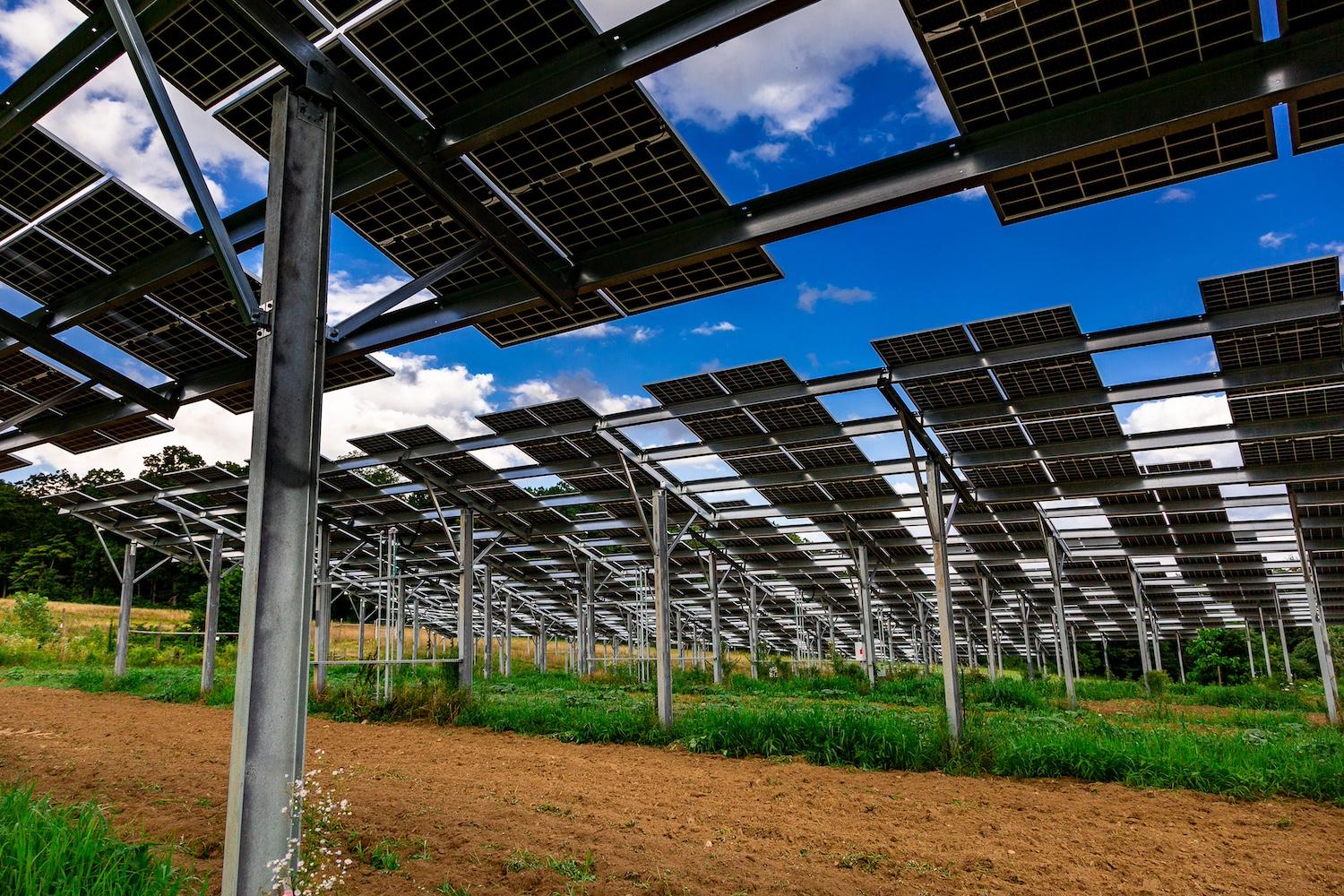
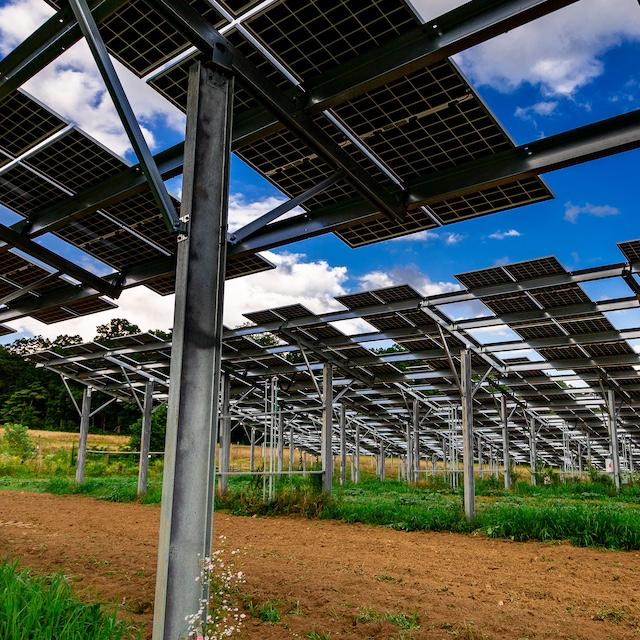
(Image: AgriSolar Clearinghouse/Flickr)
The United States dominated the global solar industry in the years following the space race of the 1950s, only to lose ground to overseas competitors by the end of the 20th century. Now the emerging field of agrivoltaics is presenting solar innovators in the U.S. with new opportunities to build their business, while also enabling farmers to take advantage of new clean energy systems that can co-exist with crops and livestock.
New solar technology is expanding opportunities for farmers
In the early 2000s, solar development on farmland typically meant taking the land out of production. With cost-cutting in mind, solar panels were placed just about a foot above the ground in large, tightly-spaced arrays, providing no opportunity for farming.
Agrivoltaics represents a more holistic approach to land use, in which solar panels are typically placed 10 to 16 feet high and spaced farther apart. Though the extra racking adds expense, that is counterbalanced by the farmer’s ability to continue farm operations within the solar array.
To date, much of the agrivoltaics development in the U.S. involves conventional silicon solar panels, with a focus on establishing pollinator habitats or grazing livestock.
More recently, new solar technologies are expanding the options for growing food crops, including greenhouse crops. One example in that area is a new type of film, developed by the manufacturing company 3M and the Swiss technology firm Voltairs, which can harvest energy while enabling sufficient light to get through the greenhouse walls for the crops to grow.
Bifacial technology is also emerging in agrivoltaics. In contrast to conventional solar panels, bifacial solar panels harvest energy from both sides. That means the panels can be placed vertically instead of tilted at an angle, saving considerable space within a field. Farmers can also deploy the vertical panels as fencing around a field, saving even more space.
In addition, bifacial panels provide a sheltering environment that can enhance crop growth, potentially creating new market opportunities for farmers. At the University of Vermont, for example, researchers are assessing the use of bifacial solar panels to support saffron as a high-value specialty crop for farmers in the Northeast.
Bringing space solar back down to Earth
Bifacial solar panels deploy the same type of silicon solar cells used in conventional solar panels around the world. Another approach is represented by the U.S. firm Ascent Solar, which specializes in CIGS solar cell technology for space applications. Now the company aims to put that same technology to work on farms.
CIGS stands for the materials copper, indium, gallium, and selenide, which are combined in a thin film to create solar cells. Thin film solar cells are not as efficient at converting light into energy as silicon, but they are flexible and lightweight. They can be deployed over a wide range of use cases where silicon panels are too heavy and rigid.
TriplePundit spoke with Ascent Solar CEO Paul Warley for some insight on the opportunities to use the company’s CIGS technology in agrivoltaic projects. He explained that building up the efficiency of CIGS technology was the key development that allowed Ascent to pursue the agrivoltaics market.
“We went from 6 to 7 volts per panel to 14.5 volts per panel, and that gave us the groundwork to start looking at this,” he said.
Warley also described how the light weight and flexibility of CIGS film offers the opportunity to develop new agrivoltaic designs that expand the space available for farming.
“Our product … can be mounted on inexpensive metal like tin, which can be slightly rolled or curved,” Warley explained. The curvature enables the panel to harvest more sunlight at different times of the day.
Partly due to their lighter weight, CIGS solar panels can be raised 20 feet off the ground. The panels are also spaced 15 to 28 inches apart, to allow more room for sunlight to reach the crops below.
The CIGS array allows for 95 percent or more of the land under the solar panels to be used for growing crops, Warley said. In contrast, he notes that conventional agrivoltaics arrays leave just 40 to 50 percent of the land underneath with enough sunlight to grow crops efficiently.
Warley also estimates that Ascent’s technology can reduce the amount of water needed for irrigation by 15 to 20 percent. That is consistent with research findings, which show that the partial shade thrown by agrivoltaic arrays helps prevent moisture loss in soil.
Next steps for CIGS in agrivoltaics
Warley foresees demand for CIGS agrivoltaics arrays in water-thirsty agricultural operations like almond farms, where height is also an important element. A typical almond tree stands about 10 to 15 feet high, with a range of up to 20 feet.
For the present, Ascent Solar is focusing on an agrivoltaics grant application to the U.S. Department of Energy, to install its CIGS solar panels at a vineyard in California. The project will help the grower manage the high cost of both water and electricity in the state, Warley said.
In addition to providing zero-emission electricity for the barn and other structures at the vineyard, the panels could also help create a microclimate to buffer the grape vines against the impacts of climate change.
Similar projects are already underway in other parts of the world. The European energy firm Iberdrola, for example, is assessing the use of conventional solar panels in a small agrivoltaic project at a vineyard in Spain. The European energy firms Enel Green Power and EDF Energy are also exploring the use of solar panels in European vineyards.
That trend has yet to gain momentum in the U.S., though some grape growers have installed conventional on-site solar arrays on rooftops and other non-growing areas.
If and when U.S. grape growers and other farmers are ready to explore agrivoltiacs, they may be able to take advantage of CIGS technology for interior facilities as well as cropland.
Last week, Ascent announced that it’s working with the University of Stuttgart to develop new prototype solar arrays for the school’s Institute for Building Energetics, Thermotechnology and Energy Storage, which focuses on sustainable engineering for living and working spaces.
HanesBrands Aims to Improve 10 Million Lives By 2030: Here's How
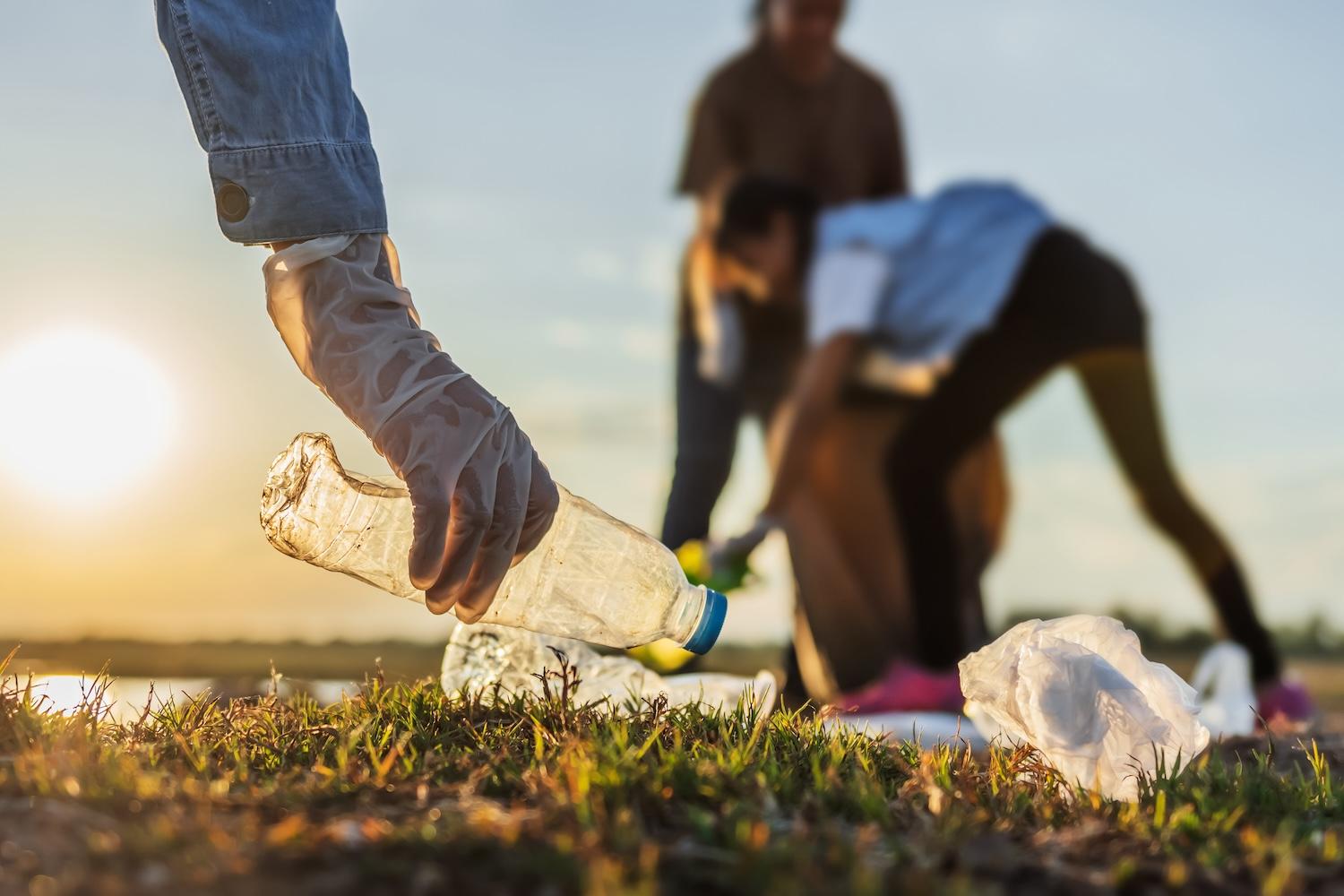

(Image: lovelyday12/Adobe Stock)
Growing up in Honduras, I witnessed the power natural disasters can have on the planet and how life-changing it can be when people come together to fix broken communities left with nothing.
When I was young, Category 5 hurricanes created economic and cultural devastation across Latin America. The international business community often responded with donations of supplies, food, and the arrival of technical teams to repair roads and infrastructure. Local companies of all sizes, even those that had suspended operations for a time, mobilized to assist their employees who had suffered.
At that time, the term “corporate social responsibility” was not widely used, yet many companies made efforts to help their communities as part of their philanthropic practices. In the years following Hurricane Mitch in 1998, my role as a leader in sustainability led me to become actively involved in efforts to care for communities after natural disasters. HanesBrands (HBI), our global sustainability mission centers around impacting the lives of people, protecting the planet and manufacturing product thoughtfully, all of which make me feel proud to lead global teams who are making a difference.
Sustainability is woven into the fabric of HanesBrands’ iconic portfolio of brands including Hanes, Champion, Bonds, Playtex and Maidenform. Efforts across the brands and throughout the company have helped us to steadily march forward in our quest to achieve ambitious sustainability goals by 2025 and 2030 that encompass three pillars: People, Planet and Product.
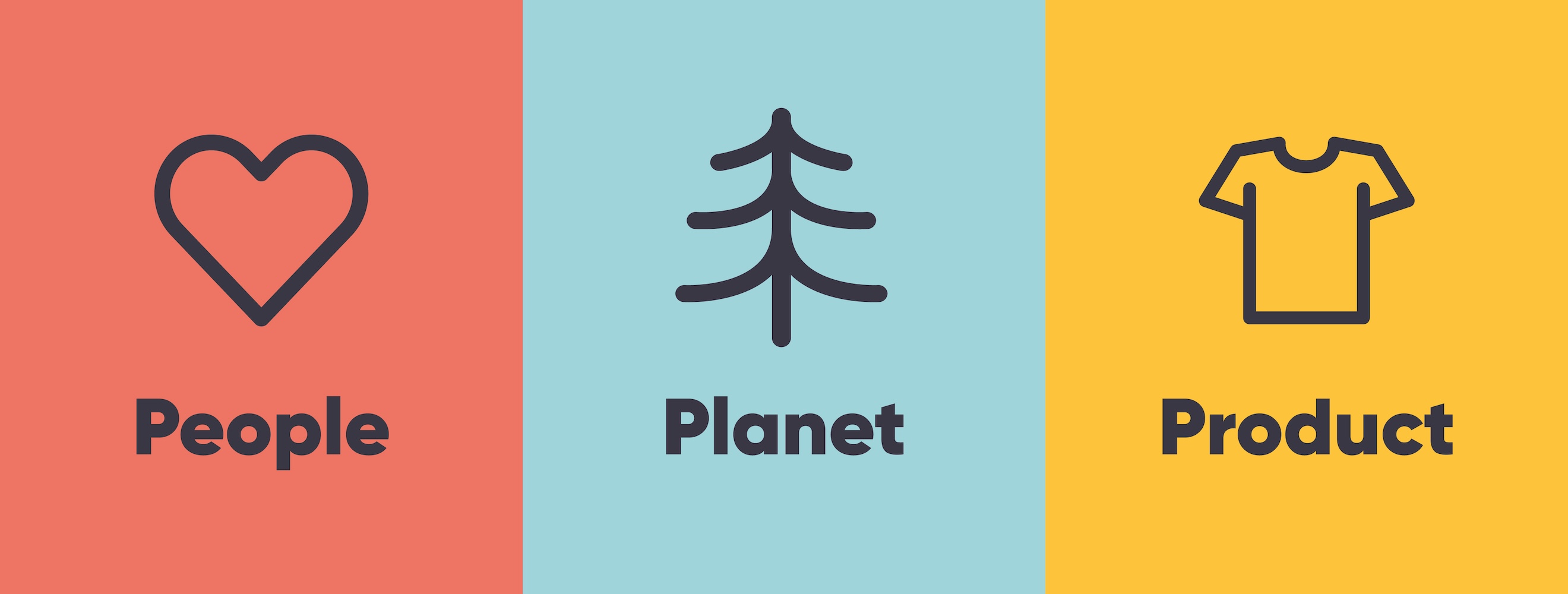
At HanesBrands, we have a goal to positively impact the lives of 10 million people by 2030. Our latest progress report shows that as of 2023, we’ve reached 3.4 million people through a variety of creative sustainability initiatives.
In a world filled with challenges, it's heartening to see how an innovative idea can blossom into a life-changing initiative. HanesBrands’ Green for Good program is a testament to how a corporate sustainability goal can transform lives and make a positive impact on humanity. The program invests hundreds of thousands of dollars saved from recycling into community improvement projects. We’ve provided access to medical services, funded health clinics, and facilitated over 1,500 life-changing surgeries, demonstrating the direct impact of sustainability on communities where we live and work. Since its inception, Green for Good has also provided educational opportunities for at-risk children and sponsored schools across multiple countries.
We partner in Honduras with Atrium Health Wake Forest Baptist Hospital, WakeECHO Global Ophthalmology, and Hospital del Ojo Club de Leones Fraternidad in San Pedro Sula. Through collaborative efforts, we've been able to facilitate corneal transplants and cataract surgeries for patients in need, including some of our very own associates and their families. In a country where an organ bank is absent, these procedures are critical, and our partner specialized medical team has made a real difference in these patients' lives.
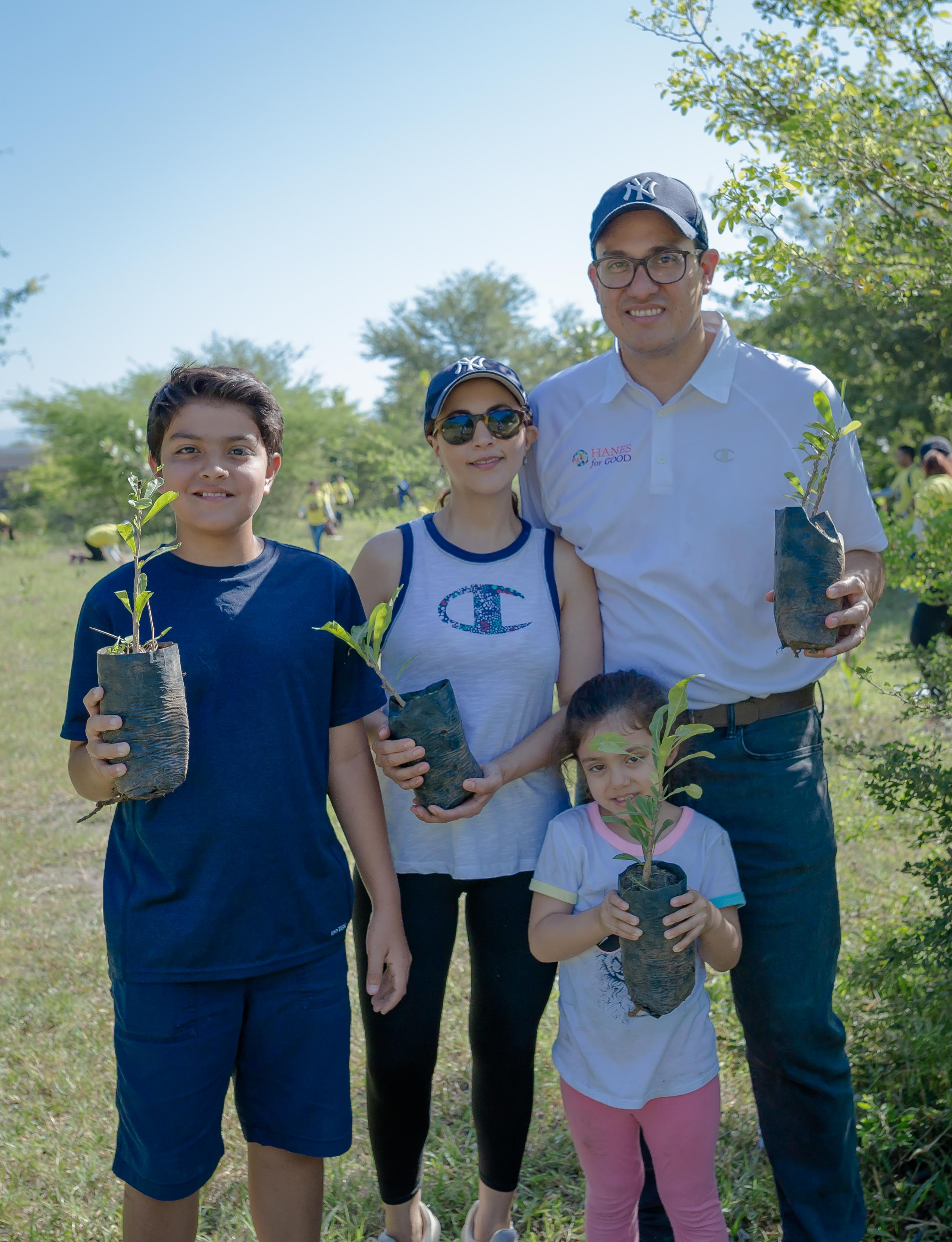
Through the Hanes for Good program, Hanes donated thousands of socks and shirts to people experiencing homelessness in partnership with Super Soul parties. The nonprofit initiative transforms the Big Game in the U.S. into a meaningful and inclusive experiences for those in need.
In the U.S., Hanes partners with Delivering Good to assist with ongoing natural disasters recovery efforts. HanesBrands began working with Delivering Good over 10 years ago, and together, more than $45 million of products have been distributed to communities recovering from crises.
In Europe, Champion donates personalized apparel to hundreds of athletes, volunteers, and members of the Special Olympics. This contribution is part of an ongoing partnership with the Special Olympics to promote a world free from discrimination where everyone can be a champion.
On the environmental front, we've achieved a notable 50 percent reduction in Scope 1 and 2 greenhouse gas emissions since 2019 alongside reductions in water use and packaging weight. We're aiming to achieve zero waste across our operations by 2025 and transition to 100 percent renewable electricity by 2030.
Biomass-fired boiler technologies, geothermal electric power, and solar electric are all part of our owned energy management strategy as we march toward our 100 percent renewable electricity goal. These cost-effective renewable energy technologies are helping to power our sites. Our biomass operations save about 70,000 metric tons of greenhouse gas emissions per year — that’s equivalent to taking 14,830 cars off the road or planting 1,138,060 trees.
Our Dos Rios Textiles facility in the Dominican Republic pioneered an innovative biomass project, which consists of the use of wood chips from a sustainably managed energy crop to power steam boilers, reducing dependency on fossil fuels, lowering the plant’s carbon footprint, and increasing overall energy efficiency. Our Dos Rios plant is already powered by 100 percent renewable solar energy thanks to a Solar Power Purchase Agreement with a local solar park. It is the largest solar electric agreement to date for our company and will supply nearly 100 percent of the electrical needs for the facility for the next decade.
In Thailand, Honduras and the Dominican Republic, efforts to enhance solar power have been underway for years. These projects are predicted to save $16 million over the next ten years and substantially reduce greenhouse gas emissions.
There can be a misconception that sustainability is expensive. We’ve seen that efforts to provide reliable clean power while reducing our reliance on fossil fuels, lowering greenhouse gas emissions, and mitigating risk from fuel price volatility can actually save big money in the process.
Our product-specific goals also reflect our commitment to sustainability, with initiatives such as using sustainably grown cotton and reducing single-use plastics and packaging weight. These efforts are not just about meeting targets; they're about reimagining how we create and deliver products that are mindful of their impact on the planet.
In Surin, Thailand, we are making meaningful changes through our upcycle program. Associates work with local vendors to turn excess materials into products that are then sold by the local community. This project keeps 240 tons of waste out of landfills per year. We are always actively exploring ways to implement circular approaches into the heart of our clothing production. We kickstarted the use of circular economy practices years ago by partnering with yarn mills to manufacture reclaimed and recycled cotton. Cotton fiber that would have been thrown away as part of the manufacturing process can be re-spun into yarn that can then be used to create socks and similar products.
Cotton is the most commonly used material in HanesBrands products, and we are well on our way to achieving 100 percent sustainably grown cotton by 2030. We are able to track cotton in a way that gives us visibility into our cotton sources which in turn helps us manage risks and sustainability practices from seed to shelf and beyond. Unlike most apparel companies, we can tell you where this cotton comes from down to the gin level.
Beyond numbers and metrics, our sustainability journey is also about collective action. Our global associate campaign we kicked off last year, "I'M IN," has encouraged our associates to undertake 90,000 sustainable actions in their personal lives, from energy-saving practices like washing their clothes in cold water to volunteering in communities. This grassroots movement underscores our belief that every action, no matter how small, contributes to a larger positive impact on our planet and communities.
In 2021, we joined forces with Tide to spread the word that washing clothes in cold water is a simple way to combat carbon emissions. We know that Hanes products are in nine of out ten homes in the U.S. That’s a lot of laundry. Up to 90 percent of the energy a washing machine uses is from heating the water. The cumulative effect if all Americans switch to washing three out of four loads a week with cold water, can save enough electricity to power all of New York city and San Francisco for over a year (by 2030 compared to a 2020 baseline).
Our strategic investments in sustainability have yielded $23 million in savings since establishing ambitious goals in 2020. There is an ongoing effort in our global operations to identify cost-savings opportunities and innovative ways to drive sustainability progress.
Our efforts have not gone unnoticed. We've been consistently recognized with awards such as the Energy Star Sustained Excellence Award and Partner of the Year Award from the U.S. Environmental Protection Agency. We also achieved an A- score in the 2023 CDP Climate Change Report and 2023 CDP Water Security Report. These accolades affirm our global leadership in sustainability and inspire us to continue pushing boundaries.
We invite everyone to join us on this journey toward a more sustainable future by visiting hbisustains.com. Together, we can create lasting change that benefits not only the environment, but also the lives of millions around the world.
This article series is sponsored by HanesBrands and produced by the TriplePundit editorial team.
Empowerment Avenue Helps Incarcerated Writers Get Their Work Published


San Quentin prison in San Quentin, California, north of San Francisco. (Image: Frank Schulenburg/Wikimedia Commons)
When prisons around the U.S. locked down in 2020 as COVID-19 spread rapidly within them, most journalists lost the access needed to report on the issue. But Rahsaan “New York” Thomas could report from the inside, as a then-incarcerated writer who had just tested positive for the virus.
“Instead of crying about COVID, I was like… ‘I got the scoop of the century. Let me write about it. Let me get my voice out here,’" he told TriplePundit. "And my writing career launched."
His Business Insider story launched more than his writing career. Thomas’ account of San Quentin prison’s lockdown laid bare the administrative abuse and neglect that caused an outbreak that killed 27 people, infected hundreds, and left many suffering in brutal conditions — including solitary confinement under the guise of medical isolation.
Thomas describes art as the ultimate icebreaker and a path to economic empowerment. That story earned him four figures at a time when he was making just $36 per month writing for the San Quentin News. That same year, he co-founded Empowerment Avenue. The organization pairs incarcerated writers and artists with volunteer editors, helping participants connect with outside publications and secure fair pay.
“If you want to change the criminal justice system, you need to come proximal to it,” Thomas said, paraphrasing attorney Bryan Stevenson’s words during a visit to San Quentin several years ago.
Publications focusing on prison reform and social justice, like The Marshall Project and Justice Arts Coalition, and programs like the PEN Prison Writing Contest, which publishes an annual anthology of work by writers who are incarcerated, help amplify incarcerated folks’ voices. But barriers to creative resources and connections, especially in mainstream media, remain high for creators in prison. They often work alone, with little to no professional resources and without the freedom of communication necessary to produce and find work. Organizations and publications are rarely aware of the support that incarcerated creators need, much less equipped to provide it.
This is where Empowerment Avenue comes in. The program recruits incarcerated writers and artists for its Writing for Liberation and Visual Arts for Liberation cohorts — made up of about sixty people in total. They work one-on-one with editors and mentors from a volunteer network of editors, journalists and other media professionals. The program also offers funding for materials like paper and stamps, administrative help with writing exhibition proposals and facilitating communication, and practical guides for those involved both inside and outside the system.
A renaissance at San Quentin
The program was piloted under the nonprofit Prison Renaissance, which Thomas and fellow creatives Emile DeWeaver and Juan Meza co-founded while at San Quentin. They were inspired by a growing number of artists and writers there who were getting their work published. “The fact that we were starting to get [our work] in outside magazines and outside publications made me feel like there was a renaissance happening at San Quentin,” Thomas said.
DeWeaver was publishing the most by far and worked with an editor throughout the writing and publishing process, Thomas said. “What if everybody had somebody like that on the outside?” He wondered.
He met freelance journalist Emily Nonko, Empowerment Avenue’s co-founder and writing director, when she attended an annual breast cancer walk at San Quentin. The two bonded over shared interests in prison reform and media equity. Not long after, they asked an online freelance writing group, “Who wants to help incarcerated writers get their voices out?” Over 100 people volunteered, and Empowerment Avenue was born.
How it works
The organization hinges on a database of volunteers who are matched with incarcerated writers and artists recruited for the program through their existing work, often in publications like the Marshall Project and the Prison Journalism Project. Empowerment Avenue takes stock of each cohort member’s needs, including how the prison works, how they can receive funds, and what restrictions they need to work around. “[We] let the artists tell us what their rules are,” Thomas said.
Ryan Moser joined the first group of about 20 established creatives following the pilot cohort. Nonko contacted Moser after reading his essays in the Marshall Project and introduced him to solutions journalism, a style of reporting that focuses on responses to the world’s problems. Over email, the two shared article examples, writing exercises and questions.
For an early article, Moser wrote about the August 2021 earthquake in Haiti, where many people in the Miami prison he was at were from. He interviewed fellow residents about their families and where they grew up, noting the sense of community his work built and how quickly he fell in love with journalism. “It encompassed a lot of things that I already believed in, like questioning authority, going after bullies, dealing in facts and not fiction,” he told 3p.
Empowerment Avenue also helps editors and newsrooms support incarcerated artists and writers. The learning curve includes navigating heavily restrictive and slow prison communication systems, providing flexible deadlines and coordinating payment.
“We always try to put ourselves out of business by teaching people — encouraging outside editors and publications to work directly with artists,” Thomas said.
The organization’s practical guides address topics like maintaining creative output from inside prison and key points for editors working with incarcerated writers. An abolitionist guidebook written by Empowerment Avenue’s participants, volunteers, and staff and published in Scalawag Magazine, includes essays, step-by-step advice, and case studies about supporting incarcerated folks in the media. The detailed collection is a testament to their dedication and the resilience of artists in prison.
Empowerment Avenue’s impact
Accessing creative opportunities and building professional relationships can help individuals prepare for release and build the necessary funds. After what he calls his first big story, Thomas published over 40 stories in under three years and returned home having earned $30,000.
Moser published 27 articles in 12 months after joining Empowerment Avenue and earned $10,000. He is currently a fellow at the Educational Writers’ Association and the local newsroom Resolve Philly. He’s also a freelance reporter and media consultant.
Empowerment Avenue writers earned over $110,000 from their writing between May 2020 and March 2023. Their articles and essays are published in dozens of literary journals, local newspapers, and major outlets including The New York Times, The Washington Post, and The Los Angeles Times.
Participating visual artists exhibit and sell their work in galleries, online and in-person exhibits, and published work, including collaborations with incarcerated writers. “We lose track of the numbers of how much we help incarcerated people make because we help in relationships that become independent of us,” Thomas said.
Incarcerated artists’ representation in the media benefits us all. Their work not only offers the insight we need to work toward decarceration but is also a potent expression of the creative impulse and its unstoppable generative force.
Along with Thomas, other incarcerated writers broke stories and led discussions about public health and the carceral system. Following a PEN fellowship on COVID-19, Juan Haines published an op-ed in the San Francisco Chronicle detailing a lawsuit that over 300 San Quentin residents, including Haines, filed asserting that the state’s actions violated Eighth Amendment protections. Days later, a Northern California judge tentatively ruled that state prison officials acted with deliberate indifference and caused the devastating outbreak at San Quentin. Earlier this month, the Supreme Court denied California prison officials immunity against a wave of related lawsuits.
Thomas reflected on Stevenson’s statement about proximity and changing the justice system, “What's something that we can talk about? Art is that… [it’s] the ultimate way to build.”
What the Greenhouse Gas Reduction Fund Really Means For Communities


Fresno, California, has some of the highest levels of air pollution in the United States and is among the cities set to see a green economic boom thanks to federal climate programming. (Image: John/Adobe Stock)
Climate advocates celebrated the U.S. Environmental Protection Agency last month as it announced a closely watched $20 billion in grants under the Greenhouse Gas Reduction Fund. The money will go toward nonprofits, state and local agencies, and community-based financial institutions so they can help finance infrastructure projects that reduce emissions, with a focus on communities that are historically underserved.
Advocates described the infusion of climate financing as "momentous," "groundbreaking" and "transformational" in interviews with TriplePundit last month. But some onlookers are still fuzzy about what exactly the grants will be used for, what they'll mean for communities and what happens next.
With grant financing set to be delivered this summer, we're taking a closer look at how the Greenhouse Gas Reduction Fund will translate into a domino effect of green infrastructure in communities facing outsized impact from climate change and pollution.
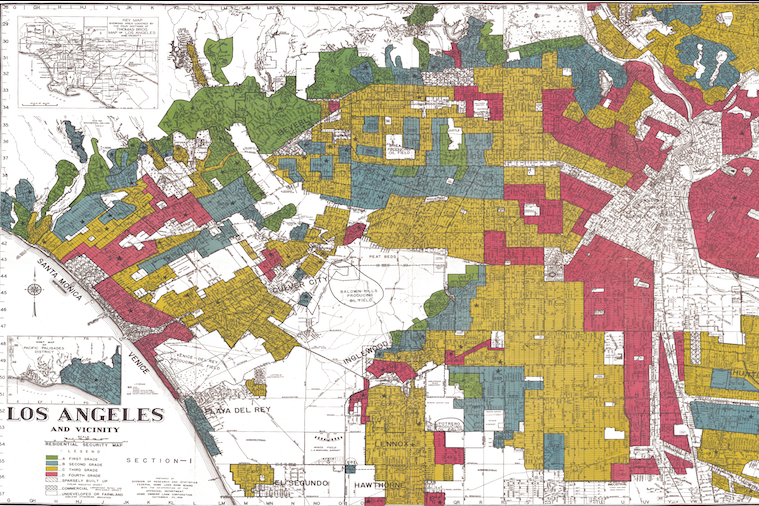
"A chance to rewrite history"
Low-income communities and communities of color face some of the worst air pollution in the United States, contributing to higher rates of preventable illnesses.
The financial practice of redlining is among the factors that contributed to this deadly legacy. As federal housing loans became available under the New Deal in the 1930s, government lenders and banks deemed certain neighborhoods — with predominantly Black and immigrant populations — too "high risk" to serve. That translated into red lines drawn around entire communities that could not access home or business loans because of where they lived, even if they personally qualified for credit, until the practice was outlawed in 1968.
Along with economic depression that's still visible today, many previously redlined neighborhoods tend to have higher levels of air pollution and greater proximity to oil and gas wells.
In many ways, the Greenhouse Gas Reduction Fund aims to flip this discriminatory financial model on its head to solve the problem. The recipients of the April grants are coalitions of lenders, so they won't build new solar energy installations, energy transmission lines or zero-emissions trucks themselves. They'll finance them within the regions they serve, and a mapping program specifically incentivizes them to focus on historically underserved communities that are overburdened by pollution.
"An inclusive green economy can create the economic opportunity that might be able to help us rewrite history from a financial institution perspective," said Jessie Buendia, vice president of sustainability for Dream.Org and national director of the Green For All program, which consulted with the EPA on developing the Greenhouse Gas Reduction Fund framework. "We're going to be able to target specific communities, many of whom were communities that were redlined historically, with an infusion of capital to build [green] infrastructure projects so they'll have the benefits associated with them — not just for jobs, but also for health."
With this financing, the Joe Biden administration aims to kickstart new green lending networks that can get projects built faster and attract private investment to multiply impact. It's not about the next big moonshot climate technology. It's about increasing access to systems that are already proven to reduce pollution, cut emissions and lower energy costs. Those include everything from community solar programs that allow renters and low-income households to share in solar power, to energy-efficiency upgrades for homes and businesses, to zero-emissions transportation and clean energy infrastructure.
"The technologies have already been proven in the market," Buendia said. "So, the innovation here is really going to be focused on deployment: How do you actually get these proven technologies into communities that have never had them before?"
A financial backbone for the Inflation Reduction Act
The Greenhouse Gas Reduction Fund is only a small part of the broader Inflation Reduction Act of 2022, which includes billions in tax incentives and grant awards for green infrastructure. Other grant competitions in the Inflation Reduction Act focus on stimulating a range of projects, such as expanding access to clean energy in rural communities, replacing diesel trucks with zero-emission vehicles, and reducing air pollution at ports.
The financing mechanisms established through the Greenhouse Gas Reduction Fund serve as a backbone for bringing the projects coming out of other Inflation Reduction Act climate programs to fruition.
"Because the Inflation Reduction Act has started making awards in all of the other programs, we actually have a huge need for financing and loans," Buendia said. "In government, you often work on a reimbursement basis, so you have to have money to get money."
In other words: As nonprofits, communities and businesses are awarded grants to implement their proposed projects, they'll need seed money to get started before various rounds of federal funding come through. The financial institutions within the Greenhouse Gas Reduction Fund are now ready and able to provide it, which can speed up the notoriously sluggish process of getting projects built.
"In the world of infrastructure, which I've worked in my whole life, you lose momentum and visibility — an opportunity to engage the public, an opportunity to celebrate these wins — because projects take so long to get online," Buendia said. "Being able to get a line of financing infused at this moment means that projects will be able to start earlier and hopefully get done earlier, and I think that's going to help build credibility for this type of investment in this country. It's really about how all of these different pieces of the Inflation Reduction Act begin to work together in a community."
The Greenhouse Gas Reduction Fund at work in Fresno, California
To understand what all this means in practice, look no further than Fresno County, California, which faces some of the highest air pollution levels in the United States. The majority of Fresno residents are people of color, with over half identifying as Hispanic or Latino, and median household income is more than $20,000 less than the California average, according to U.S. Census data.
The city received EPA funding under the Inflation Reduction Act to develop a plan to build more green infrastructure. "Once they receive these federal grants, they're not going to have the money to begin the work, and that's where the [Greenhouse Gas Reduction Fund] can come in," Buendia explained. "The municipality has identified their high-priority needs for an energy transition. They've identified perhaps developers who actually want to come in and provide those services. They've identified grant funding and capital that will finance it, and now they're going to need this infusion of funding to be able to get the actual work started."
Since $20 billion is nowhere near enough to finance the infrastructure needed for the low-carbon energy transition, a key objective of the Greenhouse Gas Reduction Fund is to multiply federal investments by attracting private capital. In cases like Fresno's, the upfront work done by the community makes it less risky and more appealing for businesses to invest in the green infrastructure the community identified.
"We are really dealing with a trillion-dollar problem with climate change and climate mitigation. But the $20 billion downpayment the federal government is making will hopefully unlock other private-sector investments to the communities who need it the most," Buendia said. "What is game-changing is that communities like Fresno have not been targeted in the way that San Francisco, New York City, Los Angeles or these large markets have. They haven't been areas that are considered investible. Now, there's actually infrastructure for people to be able to get these projects online."
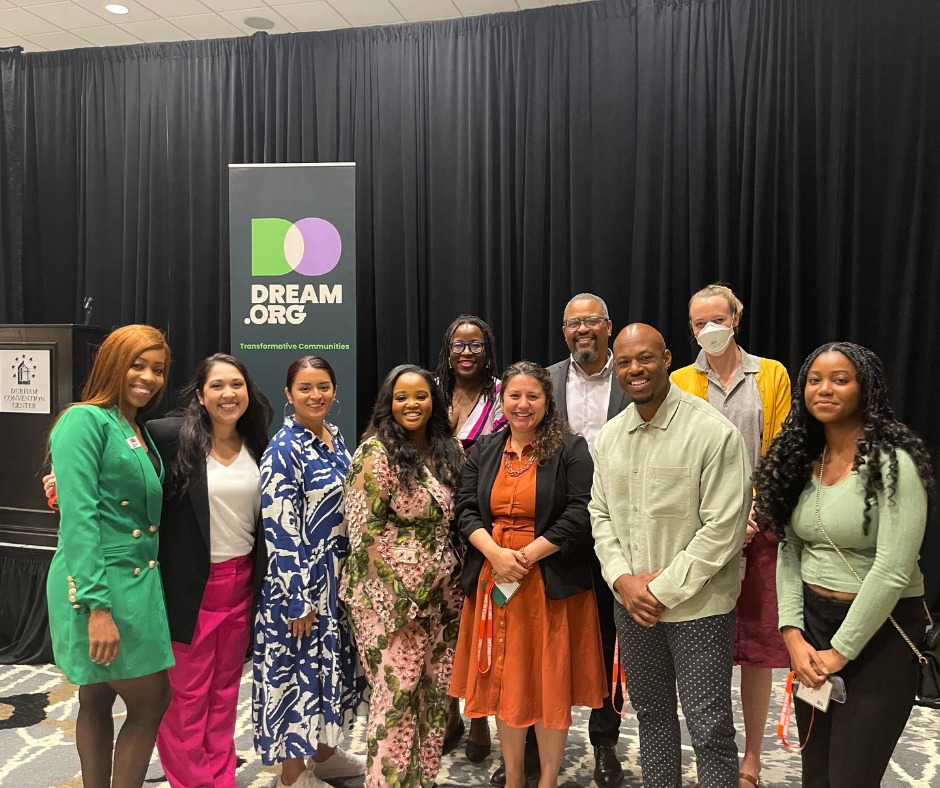
Grants are just the beginning
Beyond federal involvement serving to de-risk projects for private investors, the fact that Greenhouse Gas Reduction Fund recipients represent networks of community-based lenders from across the country opens up doors for financing models that didn't exist before. That includes interstate projects for things like energy transmission infrastructure, or funds that allow private investors to put large sums into multiple projects and communities.
"The private sector often has a challenge with investing small amounts of money," Buendia explained. "They really want to figure out how to invest in the aggregate. The [Greenhouse Gas Reduction Fund] program, working with the national applicants, that's going to be their job to figure out how to make it easy for the private sector to invest in these communities."
The program is meant to last long after the grants stop going out, with lenders re-investing the funds into new projects as they get loan payments back and new infrastructure activity attracting more interest from businesses and investors, Buendia said.
This jolt of activity also leaves ample room for people in historically disadvantaged communities to have their voices heard on how funds are spent, and also to forge their own careers in the budding green economy. Dream.org is among the organizations offering resources like scholarships and business development programs for people in underserved communities to transition their careers toward sustainability.
"This is a really big moment for people to see themselves as part of this future we're trying to build," Buendia concluded. "I would love to see a very, very strong economic message come out of this, where people really see this as a path of choice for them and for their careers. We need a full market transformation."
Support for the Anti-ESG Movement Is Dwindling, But Uncertainty Looms Ahead of Election Day


The state capitol building in Austin, Texas, a state with some of the strictest anti-ESG laws on the books. (Image: SvetlanaSF/Adobe Stock)
Pushback against the use of environmental, social and governance (ESG) factors in business gathered momentum in 2021 when legislators in approximately two dozen Republican-led states passed anti-ESG laws.
Some of these laws restrict state agencies or public pension funds from using ESG factors in their investments. Others ban state and local entities from doing business with specific financial companies that legislators deemed to be unfairly disinvesting from the oil and gas sector because of ESG screens.
In the following years, state attorneys general issued legal warnings and filed lawsuits, including a challenge to the new Securities and Exchange Commission rule supporting ESG investing principles.
Financial firms have used various approaches to navigate the anti-ESG trend. With signs the news cycle — and the general public — appear to be moving on from the narrative, can business leaders and financial professionals finally put the anti-ESG movement in the rear-view mirror?
Is public support for ESG really on the downturn?
Within the financial sector, some firms have responded to anti-ESG actions by lowering their media profile. Instead of substantially altering their ESG investing strategies, they are simply deploying alternative terms in corporate reports and client communications. Some high-profile targets of the anti-ESG movement, like the investment firm BlackRock, have also withdrawn from climate organizations while continuing to maintain ESG commitments through other entities.
In an article posted on Monday, the right-wing think tank Competitive Enterprise Institute, which has established a long association with climate change misinformation, warned the anti-ESG movement not to be fooled by corporate soft-pedaling on ESG principles.
“ESG is still alive and well, even at many of the firms that are publicly backing away from it,” wrote Stone Washington of the Institute. “Left-wing shareholder activism has shifted underground, as institutions adopt guerrilla tactics,” he added, noting that the aim of guerrilla warfare is to “wear the more powerful enemy down by depleting their time, manpower, and resources with constant asymmetrical skirmishes.” He went on to warn shareholders to “be wary of deceptive wording and ulterior methods used to advance ESG within corporations."
Somewhat ironically, Washington’s report reads more like a how-to manual for alternative ESG strategies rather than a criticism of ESG principles. The tell, though, is in the last paragraph where he observes that “public support for ESG has largely been on the downturn.”
But that's not what the data says. On Monday, for example, Forbes contributor Jamie Hailstone noted that the news cycle, and the ESG “debate” itself, have both moved on. He cited a poll by the research firm Verdantix, indicating that 62 percent of business leaders globally “agree that investment in ESG leads to increased revenue.”
“Fifty-two percent agree it would lead to lower costs, and 69 percent say it would lead to lower risks,” Hailstone added. Those findings are consistent with another survey released by the professional services firm EY last month.
“Right now, CEOs are focused on technology, especially artificial intelligence (AI) transformation, as a means to boost productivity and growth,” EY researchers led by Andrea Guerzoni advised. “But when they look into the not-too-distant future, their focus shifts to achieving net zero by decarbonizing their business and creating new revenue streams.”
As for support from the general public, one particularly useful bellwether is Texas, which passed a particularly harsh anti-ESG law in 2021. The financial fallout in terms of higher municipal borrowing costs has been growing. One recent study estimates the damage at $700 million from lack of competition as the state barred certain investment practices and financial firms.
Against that backdrop, the progressive public opinion research firm Z to A polled Texas residents on behalf of the new ESG advocacy organization Unlocking America’s Future, which presented the results on May 16.
“Texans overwhelmingly (91 percent) trust banks and professional investors over politicians when deciding whether a company is a worthwhile investment,” the study found. “In fact, 83 percent of Texans believe it is not the role of the state government to tell private financial institutions how to invest their customer’s money."
Further, “a majority of Texas voters don’t support or see the need for these anti-ESG laws, with 56 percent of voters opposing ESG bans,” the study concluded.
Winds shift on the anti-ESG movement, but uncertainty looms ahead of Election Day
Though the legislative successes of the anti-ESG movement have garnered substantial media attention, the movement has also faced considerable setbacks.
Many anti-ESG bills introduced over the past three years were watered down after pension managers and other stakeholders alerted lawmakers to the risk of financial harm, and others never became law at all.
The legal challenges are also beginning to mount. Earlier this month, an Oklahoma district court judge temporarily blocked enforcement of the state’s 2022 anti-ESG law, ruling it unconstitutional. The ruling could also impact similar anti-ESG laws in Texas and elsewhere.
Among other actions, on April 29 the 8th Circuit also allowed a group of 19 attorneys general from Democratic-led state and the District of Columbia to defend the new SEC rule against the Republican lawsuit.
Even if the legislative and legal pendulum is swinging over to the ESG side, advocates should take note that the Competitive Enterprise Institute and many other well-funded organizations are still determined to thwart ESG investing. They will all but certainly get another chance after Election Day, one way or another.
Former U.S. President Donald Trump and his allies are already laying the groundwork to contest the legitimacy of the 2024 presidential election months ahead of Election Day, just as they did in 2020, stoking fears of hacked machines and voter fraud.
Misinformation surrounding the 2020 election culminated in the insurrection of January 6, 2021. The attempt to install a permanent authoritarian ruler narrowly failed that time. Now Trump and his allies have another opportunity to establish a “unified Reich,” as mapped out by a Heritage Foundation book titled "Project 2025."
That sounds preposterous, but the implications for ESG investing are all too real. Business leaders who advocate for ESG should not depend on another Joe Biden administration to support them after Election Day. One way or another, it may not exist.
From Honest to Just: How Coca-Cola’s Fumble with Honest Tea Turned Into an Unexpected Gift
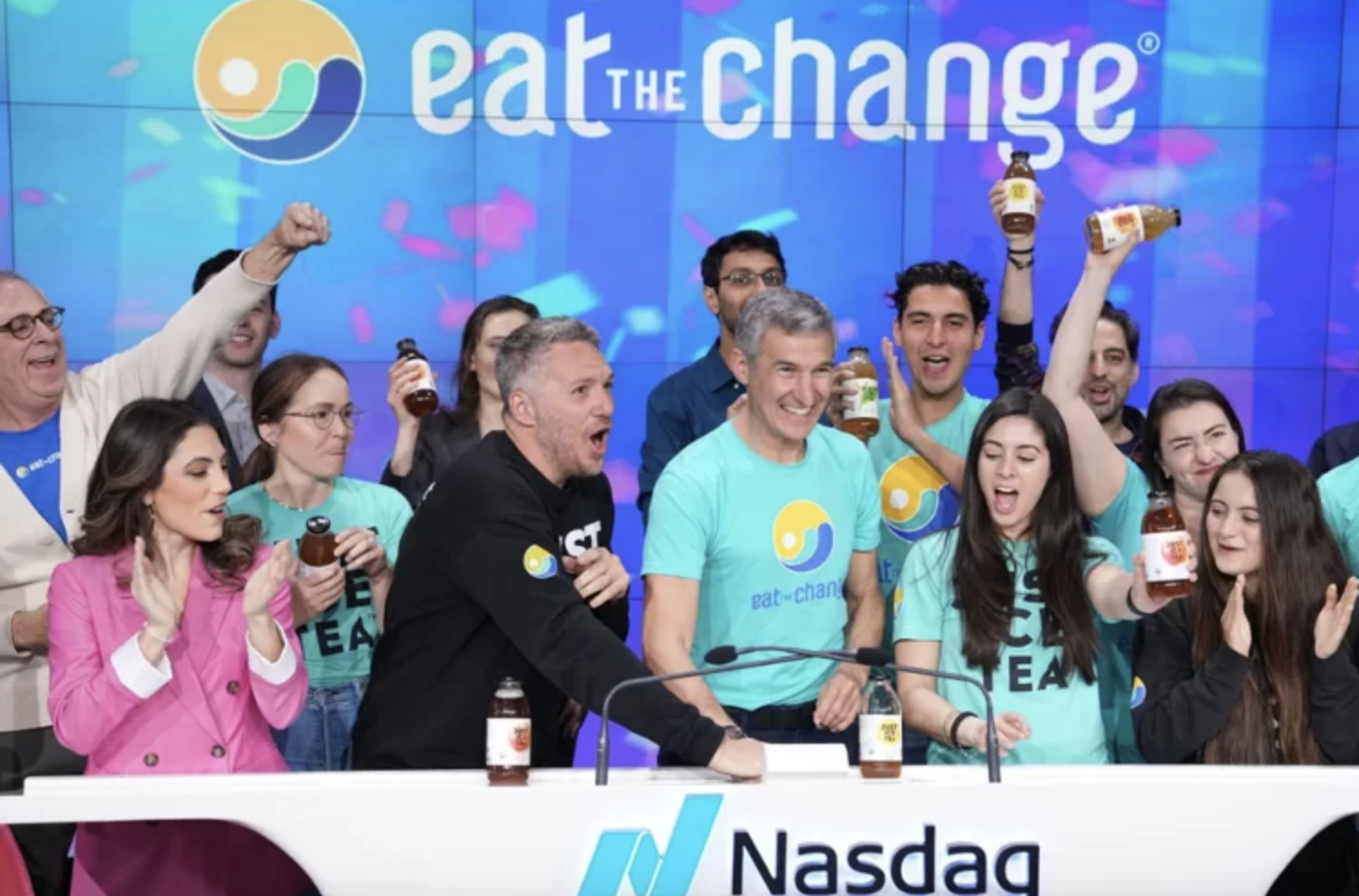
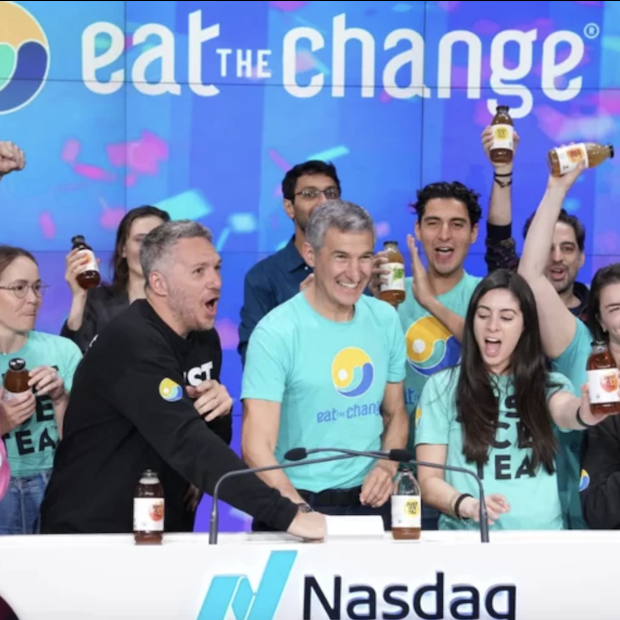
Eat the Change co-founder and CEO Seth Goldman (front center) and chef Spike Mendelsohn, co-founder and chief innovation officer, ring the opening bell at the NASDAQ stock exchange in 2023. (Image courtesy of GreenMoney Journal)
This story was original published by GreenMoney Journal and is reprinted with permission.
Two years ago this month, I was informed by senior leaders from The Coca-Cola Company that Honest Tea, the brand I launched out of my house in 1998, would be discontinued.
Despite the brand’s success as the world’s first organic and Fair Trade certified bottled tea brand, supply chain disruptions during the pandemic made Honest Tea a victim of Coke’s “Fewer, Bigger Bets” strategy.
But what felt like a huge setback turned out to be a gift, and an interesting lesson in the challenges big corporations have in scaling mission-driven brands.
Within ten days of hearing the news about Honest Tea’s demise, our sense of loss morphed into a determination that Honest Tea’s organic and Fair Trade values were too important — to our farmers (most of whom found out about Honest Tea’s termination from my LinkedIn post) and our customers — to be allowed to disappear. But the biggest piece of inspiration came via an email I received from one of our longtime tea suppliers:
"I am just hearing the news and reading your note on LinkedIn," the supplier wrote. "The story of Honest Tea is very connected to our own, our company, and the gardens and people with whom we work at origin, so the news is definitely a 'gut punch,' for us as well. For my father and myself, while the financial consequences are material, the loss of confidence in Organic and Fair Trade agriculture that this decision is likely to engender in the wider community is very saddening and probably more consequential over the long term — especially in terms of lost motivation at origins. We have been so inspired to be part of the journey that you led, and want to try to continue the effort (and fight the suggestion that this was all a failed experiment)."
After receiving that email, I didn’t need any more convincing! Of course, we also looked at the market and were convinced that there was an immediate opportunity to capture much of Honest Tea’s volume, which had grown to $75 million before I left, as well as expand beyond that size because the receptivity to Organic and Fair Trade had grown since 2019. It was also clear that since the pandemic there had been no innovation in bottled iced tea. The shelves were filled with the usual suspects — Arizona, Snapple, Pure Leaf and Gold Peak — and no one was bringing anything fresh or exciting to the category.
We couldn’t buy back the Honest name because Coke was still building Honest Kids, so my Honest Tea co-founder Barry Nalebuff and I brainstormed over a weekend and came up with a new name that would help communicate what our new brand would stand for. We came up with Just Ice Tea. My Eat The Change co-founder, Chef Spike Mendelsohn, started brewing recipes that were enhancements of Honest Tea’s greatest hits.
By September 6, 2022, less than 100 days after we heard the news about Honest Tea, we had sold our first bottle at a PLNT Burger restaurant in New York City. Today Just Ice Tea is the top-selling bottled tea brand in the natural channel, as tracked by SPINS. Our sales hit $16 million in the past 12 months, and we are just starting to sell into national foodservice, drug, mass and convenience chains.
Shakespeare wrote in All’s Well that Ends Well, “No legacy is so rich as honesty.” So, before I focus on the impact of Just Ice Tea, it feels appropriate to reflect on Honest Tea’s legacy:
- Honest Kids, our lower-sugar organic juice drink, is still flourishing as the top-selling organic kids juice drink. It is distributed nationally in more than 100,000 outlets, including McDonalds, Wendy’s, Subway, Chik-Fil-A and Arby’s — none of which come to mind when you think of an organic drink. Our aspiration to democratize organic foods is being realized.
- The caloric impact of Honest Kids is profound. The placement of the 35-calorie drink boxes at McDonald’s, where they replaced an 80-calorie juice box at the same price point, has contributed to removing more than 1 billion empty calories from the American diet.
- Dozens of amazing entrepreneurs who got their start with Honest are now building the next wave of mission-driven brands. The branches of the Honest employee tree extend into many of today’s most cherished brands including Good Culture, Calicraft, Aldi, Super Coffee, Rishi, Timberland, Beyond Meat, Jeni’s and Partake Foods.
- Ripples in the mission-driven space continue. The success of Honest inspired thousands of entrepreneurs, investors, and larger food companies to embrace the healthier, organic and Fair Trade approach to food. Our book, "Mission in a Bottle: The Honest Guide to Doing Business Differently," which was a New York Times bestseller, helped provide the playbook for tens of thousands of rising leaders.
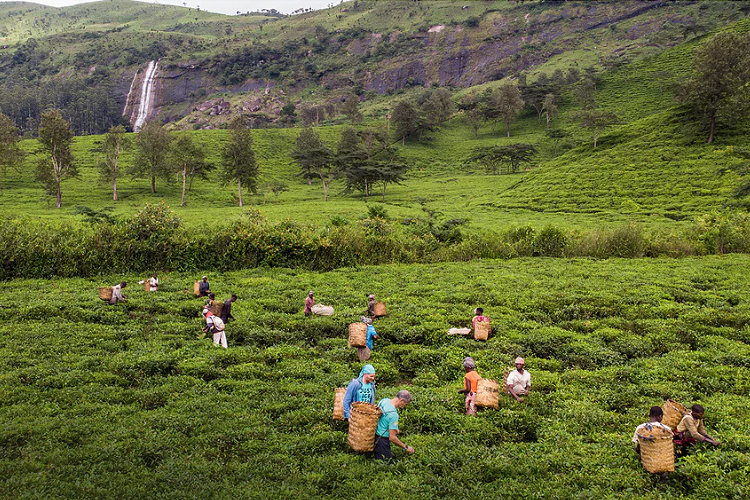
Shortly after we launched Just Ice Tea, I took my co-founder Chef Spike Mendelsohn to a tea garden in Zambezia Province in Mozambique (pictured above). The landscape was breathtaking – green rolling hills, surrounded by fragrant eucalyptus trees, laced with waterfalls and streams flowing throughout. Roughly 10,000 people live throughout the tea fields. In addition to picking tea leaves, they grow their own crops for food and income.
Even with the higher-than-normal Fair Trade USA wages that Cha de Magoma pays the tea pickers, Zambezia Province is one of the poorest provinces in one of the poorest countries (186 out of 192) in the world. The average life expectancy is 54.6 years. Not only are cholera, malaria, and AIDS major threats, but residents also lack access to medical services to diagnose these illnesses.
When we met with the Worker’s Council that decides how our Fair Trade premiums are spent, they requested we focus our donations on building a pathology clinic that can test, diagnose and provide basic treatment for illnesses. Without access to this kind of resource, villagers need to travel 90 minutes, which is especially challenging since they lack access to cars. This year we will be contributing and raising funds for the medical equipment needed to launch this facility.
When we launched Just Ice Tea, we wanted to honor and celebrate what Honest Tea stood for, but promised ourselves we wouldn’t be operating with an old playbook. The launch of our new canned line is the latest example of our commitment to think more broadly and boldly about where Just Ice Tea can go. The cans should help support our efforts to democratize organics by making more sustainable and healthier foods and drinks available to more people because of their lower price point.
The whole Honest-to-Just Ice Tea experience has confirmed for me that Karma is real — and positive intentions and actions count. Because we tried to do the right things at Honest Tea, every part of the supply chain was eager to work with us again — farmers, retailers, distributors, suppliers and co-packers, not to mention investors and consumers.
Honest Tea’s termination created a big hole in the marketplace, and we have been fortunate to be able to fill a lot of it. Now it’s up to us to see if we can take Just Ice Tea beyond where Honest went and realize the full promise of the brand and the values it represents.
This story was original published by GreenMoney Journal and is reprinted with permission.
Listen to Cliff’s GreenMoney interview with Seth Goldman at the 30th SRI Conference in 2019 – reflecting on what it takes to keep a social mission at the center of a brand.
Building Love and Belonging into Employee Resource Groups


Employee resource groups such as the Out + Ally network of LGBTQ+ employees and allies help to foster inclusion and belonging at Subaru. (Image courtesy of Subaru of America)
Finding common ground is inherent to human nature. It’s how we establish rapport, make meaningful connections, and relate to one another each and every day. Encouraging individuals’ diverse perspectives and embracing their unique experiences should be at the center of any successful business. People are increasingly looking for a genuine community built on a foundation of respect, shared ideals, values, genuine connection and, ultimately, a sense of belonging.
The challenge, especially as companies work to reach pre-pandemic levels of productivity, is that many employees feel excluded at work. This can be especially true for those from marginalized communities. In the 2023 Belonging Barometer from EY, 41 percent of workers said the workplace is where they feel the greatest sense of belonging, but 75 percent said they’ve felt excluded there. In addition, more than half reported feeling reluctant to share dimensions of their identity while at work for fear it could hold them back professionally. While this can sound disheartening, it points to an incredible opportunity for businesses to build workplace communities that ensure all belong.
Fostering that sense of community is a core element of the Subaru Love Promise – the Subaru commitment to show love and respect to all people at every interaction, including our workplaces. While we often talk about the impact we make on the communities around us, the Love Promise begins at home within our own walls and with our own employees. For us, that means fostering an inclusive workplace where people feel they can bring their authentic selves to work. It is important that we create an environment that values diversity and inclusion, where our employees feel celebrated and valued for their diverse backgrounds and unique perspectives. Toward this goal, we support employees to voluntarily organize and participate in groups to recognize, embrace, and leverage the richness of their backgrounds, experiences, and outlooks.
This commitment to our employees has come to life in several ways, most notably through our employee resource groups (ERGs). While we have our eye on growing ERGs further, we currently have five: Black and Latino Employee Network for Diversity at Subaru (BLENDS); Evolve, which focuses on access to physical and social wellness for all; Out + Ally, a network of LGBTQ+ employees and allies; Subaru Armed Forces Resource Group for Employees (SARGE); and Subaru Women’s Network.
We established ERGs as an opportunity for employees from historically marginalized groups to organize and create safe spaces to connect, educate, and become champions for the unique needs of underrepresented groups within the company. In the spirit of inclusivity, the ERGs are open to all. Employees can receive peer support, explore leadership and volunteer opportunities, and actively help us work toward the bigger goal of cultivating a more inclusive workplace. We believe there is something in it for everyone, whether you personally identify with one of the groups or not.
At Subaru, we see ERGs as an integral part of our culture, and we treat them that way. We invest time and resources to ensure they are set up for success. That means providing a framework for each group with structure, clearly defined operating processes, strategic goals, and financial support.
Each group has two employee chairs, a steering committee, and a budget that allows them to host events and invest back in the community through nonprofits aligned with their unique mission. Each group also has two executive sponsors who also sit on our corporate diversity council. This ensures that senior leaders are directly involved in diversity, equity, inclusion and belonging (DEIB) efforts at a grassroots level and better positions them to identify and champion new ideas or initiatives that support our inclusive and equitable workplace goals.
We leverage our ERGs to help us cultivate a more inclusive culture, but their support extends beyond hosting events and volunteer activities. We also see them as trusted advisors on company policies and benefit packages. It is important to us that our ERGs have an opportunity to make an impact on how we support people, and asking for their input is our way of including their unique perspectives and diverse ideas in shaping a more inclusive employee experience and support system.
But what is particularly special about ERGs at Subaru is that they reach outside of the walls of our headquarters to make a difference for the causes that matter to them. The Subaru of America Foundation, which supports organizations that benefit our hometown of Camden, New Jersey, allocates funding to each ERG to donate to a charity of their choice in the city of Camden. ERGs work together to select the charity, present their proposals to Subaru executives, and coordinate the donation and volunteer opportunities for members to make a real difference in the causes they care about. At its heart, it’s our Subaru Love Promise extending to the communities where we live and work and having a meaningful impact.
Working with intention on our ERG programming over the past five years has strengthened our culture in immeasurable ways. We have seen an increase in employee engagement scores, and group membership has increased year over year. We’ve also heard from new hires that our thriving ERG community was a key driver in their decision to work at Subaru. It’s one of the reasons why we have incorporated ERGs in the recruitment and onboarding process.
Most importantly, the key ingredient to our ERGs is aligning them to our guiding principle: the Subaru Love Promise. We unabashedly talk about how love is what makes Subaru "More Than a Car Company,” and it’s also what makes an office into a true community. When businesses allow the people in that community to pursue their passions in the workplace – and put true support behind it – incredible things can happen.
This article series is sponsored by Subaru of America and produced by the TriplePundit editorial team.